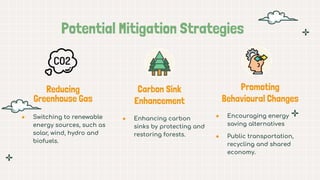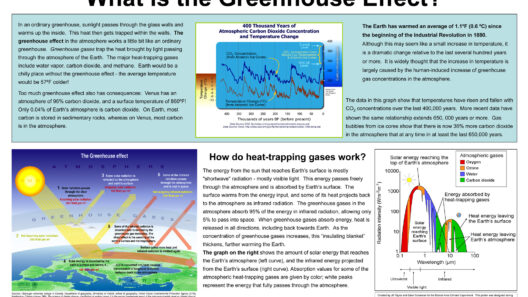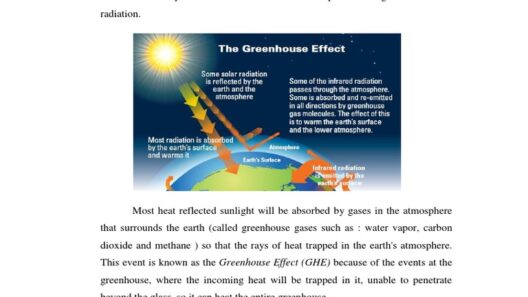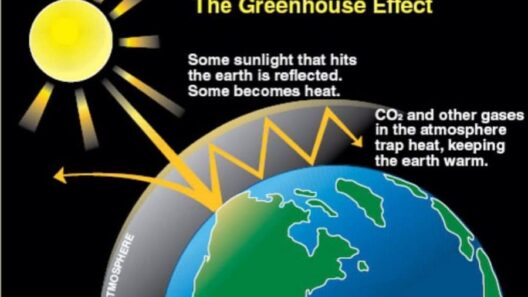The greenhouse effect, while a natural phenomenon, has been intensified by human activities, leading to alarming increases in global temperatures. This scenario is akin to wearing a thick, insulating coat on a sweltering summer day. It’s time to shed that coat, to embrace simplicity and sustainability. Herein lies an invocation to harness quotidian practices that can collectively contribute to a monumental shift. Understanding how to avoid the greenhouse effect not only preserves the Earth but also cultivates a vibrant future for generations to come. Below, we dissect practical changes that can mitigate global warming, cultivating an ecosystem of sustainability through individual and collective actions.
Every action, no matter how small, can contribute to a larger movement. The following sections explore easy yet effective lifestyle alterations, unleashing the power of communal responsibility and personal commitment to our planet.
***Cultivating Sustainable Transportation Choices***
Transportation has emerged as one of the leading contributors to greenhouse gas emissions. The wheeled juggernaut of modernity often leaves an indelible carbon footprint. Yet, we have the means to revolutionize our daily commutes. Imagine a tapestry of vibrant, interwoven routes where walking, cycling, and public transportation flourish.
Opting for bicycles and walking not only curbs emissions but also fosters a connection with the local environment. The hum of tires on pavement and the rhythm of footsteps can amplify community interactions, transforming mere transport into a cavalcade of sustainability. When possible, consider commuting via public transportation. Buses and trains have inherently lower per-passenger emissions compared to the solitary car ride.
Carpooling serves as another robust strategy. It transforms a singular endeavor into a shared journey, effectively reducing the number of vehicles on the road and fostering camaraderie. Moreover, embracing electric or hybrid vehicles represents an investment in cleaner technology that is increasingly accessible, turning the tide against fossil fuel dependency.
***Redefining Energy Consumption at Home***
Homes across the globe pulsate with energy, and therein lies an opportunity to orchestrate a metamorphosis in energy consumption. Picture fortifying your sanctuary with energy-efficient alternatives; each small change can create ripples of impact in the larger ocean of global warming.
Begin by replacing incandescent bulbs with LED lighting. Although the initial investment may seem daunting, the longevity and efficiency of LEDs prove economical over time. Furthermore, reducing reliance on energy-intensive appliances is vital. Consider air-drying clothes instead of using a dryer or utilizing a microwave instead of an oven for small meals.
Embrace the concept of a smart home. Programmable thermostats can be manipulated to optimize energy use, ensuring that heating and cooling align with actual occupancy. Simple acts like sealing windows and doors to prevent drafts can significantly reduce the energy required to maintain comfortable indoor climates.
Renewable energy sources also beckon consideration. Installing solar panels converts rooftops into power-generating assets, promoting both independence and sustainability. By tapping into environmentally friendly resources, households not only mitigate their ecological footprint but also contribute to a burgeoning green economy.
***Conscious Consumption and Waste Management***
Your purchasing decisions act both as a vote for sustainable practices and a critique of the damaging production processes that contribute to greenhouse gases. Picture this: the purchasing power is a currency of ethics, shaping the landscape of production and consumption.
Emphasizing local and organic products not only supports eco-friendly farming practices but also minimizes the carbon footprint associated with transportation. When feasible, embrace a plant-based diet, even if only partially. The production of meat generates significantly higher greenhouse gases compared to plant alternatives. Sources of sustenance that are kinder to the Earth lead to a healthier planet.
Moreover, consider the lifecycle of products you purchase. Adopting a minimalist mindset can alleviate excessive consumption and excessive waste. Reuse, recycle, and repurpose—these are the mantras of the conscientious consumer. Awareness of packaging materials is crucial; opting for biodegradable or recyclable packaging communicates a preference for sustainable practices.
Active waste management also plays a pivotal role. Composting organic waste redirects a significant portion of garbage away from landfills, where it would otherwise decompose and emit methane—a potent greenhouse gas. The act of composting not only enriches the soil but is emblematic of a broader commitment to maintaining ecological balance.
***The Ripple Effect of Individual Action***
In summation, the journey to mitigate the greenhouse effect starts with individual actions. Each decision reflects an intertwining of personal values and environmental stewardship. The metaphor of the butterfly effect is apt—simple, conscious choices, like a butterfly flapping its wings, can instigate substantial changes in the climate kaleidoscope.
Advocacy emerges as a critical arm of individual action. Engaging in community discussions, joining local environmental organizations, or advocating for sustainable policies amplifies personal efforts and inspires collective action. By fostering dialogue around climate-conscious decisions, communities can galvanize momentum toward larger systemic changes.
Ultimately, it is the cumulative effect of conscientious individuals that can bridge the gap between apathy and activism. Small shifts in behavior and thinking can lead to a wave of change that transforms the course of our climate crisis. Together, we can divert our trajectory away from the impending heat of the greenhouse effect. Let’s unravel this intricate web of sustainability, one mindful action at a time, nurturing the planet that nourishes us all.








